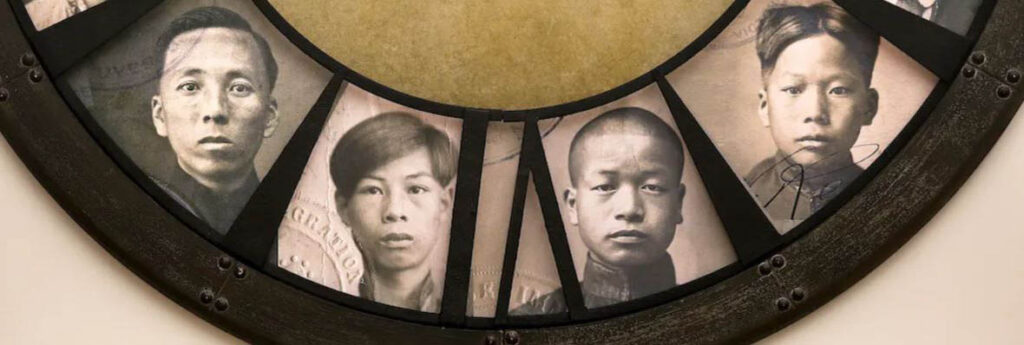After more than six year’s of planning, Canada’s newest museum opened the doors to its permanent location in Vancouver’s Chinatown on July 1 – a date that museum executives say serves as a poignant reminder of a part of Canada’s history that has often been overlooked.
The museum notably examines the 1923 Chinese Exclusion Act, which effectively not only halted Chinese immigration to Canada, but it extinguished the family lines of thousands of labourers already here.
Many were condemned to bachelorhood or cut off from loved ones in China, said Catherine Clement, curator of the inaugural exhibition for the museum, which opened in the city’s historic Wing Sang building on the 100th anniversary of the controversial law’s enactment.
“They just withered here,” Clement said. “They had no descendants left to tell their stories. Nobody even remembers they existed. They broke while they were here.”
Some ended up in mental health institutions, including Coquitlam’s Essondale Hospital, said Clement, calling them “the face of exclusion.”
Now their stories are being told at the exhibition, “The Paper Trail to the 1923 Chinese Exclusion Act.”
“I think many people felt that through their history lessons or through schooling, people never understood the full history,” said Grace Wong, the museum’s board chair. “We take that as our mandate, that public education is so primary to what we should do. And part of that is to help tell that full history.”
The society behind the museum was launched in 2020 after community consultations, and the physical location was found in 2022 after the province provided $27.5 million in funding.
Museum CEO Melissa Karmen Lee described the institution as a startup, saying that the facility’s ultimate success will depend on how many visitors it can draw.
Lee hopes the museum can contribute to the revitalization of Chinatown and draw more foot traffic to the community.
“We hope to have partners and shops and cultural institutions also supporting us in moving and coming to Chinatown,” she said. “We hope all that becomes a part of what it is to visit the Chinese Canadian Museum.”
Clement said the subject of the exclusion act, also known as the 1923 Canadian Immigration Act, first caught her interest when she was spoke to Chinese Canadian war veterans for another exhibit.
“I would say, where were you born?” Clement said. “They would say Vancouver, Victoria, Calgary. And yet, they would pull out an immigration card, and almost all of them were dated 1924.
“Many years later, I realized they were evidence of the exclusion act,” she said. “These are the guys who served in the war for Canada, and they were Canadian-born, and yet they have an immigration card. They were the only community in Canada where children were given an immigration card, who were Canadian born.”
Clement compiled the documents in the Paper Trail exhibit, mainly through private collections and official records from institutions such as psychiatric hospitals.
Lee said the museum is also featuring a second exhibit for its opening, focused on Chinese migration to Canada from as early as 1788.
The key, she said, is to present a diversity of voices within Chinese Canadian history.
“We have Chinese people immigrating to Canada not only from China, but also from Vietnam, from Cambodia, from South Africa, from Mauritius,” Lee said. “So, we want to tell all of these stories when we talk about our exhibitions at the Chinese Canadian Museum.”
Ultimately, Wong said the museum belongs to all Canadians regardless of ethnic or cultural background. She hopes people from all parts of the community will take advantage of the new facility to learn more about the challenges people faced in striving for a multicultural Canada.
“It is for all of us, because the Chinese Canadian history is fundamentally part of the full BC history,” she said. “It’s fundamentally part of the full Canadian history, and it’s a very key moment for all of us.’

